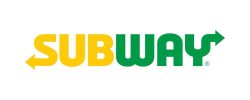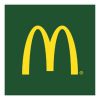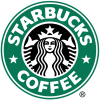The Glossary of Augmented Reality
A
AR Kit & AR Core
These are, respectively, the AR development platforms of Apple and Google. ARKit and ARCore can be extended with features that are not natively available in these AR frameworks or that come with different quality standards.
AR Quick Look
AR Quick Look is the feature available on Apple smartphones and tablets that allows you to project objects in augmented reality. It is now available for e-commerce sites.
Assets
All the materials, textures, and objects (2D or 3D) that are needed to create a filter.
B
Beaconing
Markup is the technique of creating a composite scene using augmentations, triggers or other elements.
Body Tracking
It is the recognition of a user's body movement to update a display according to the user's point of view. Body tracking is available on Snapchat.
Contact
C
Spatial Calculations
These are, respectively, the AR development platforms of Apple and Google. ARKit and ARCore can be extended with features that are not natively available in these AR frameworks or that come with different quality standards.
Capture
AR Quick Look is the feature available on Apple smartphones and tablets that allows you to project objects in augmented reality. It is now available for e-commerce sites.
3D Configurator
It is the recognition of a user's body movement to update a display according to the user's point of view. Body tracking is available on Snapchat.
Virtual reality headset
A virtual reality headset is an immersive device (with a microchip) that allows users to immerse themselves in virtual experiences in a captivating way. It is designed to be worn on the head and provides a visual and auditory interface for deeper interaction with virtual worlds. Virtual reality headsets are equipped with high-resolution screens and gyroscopic sensors, creating a three-dimensional perception of the virtual environment. Thanks to these devices, users can explore environments & worlds, play interactive games, watch 360-degree videos and even take part in training or design experiences. Virtual reality headsets offer an immersive and captivating experience, transforming the way we interact with the digital world.
D
Device
It is the device that shows the effect. For filters on social networks it is the screen of the phone or tablet for example.
Detection
Refers to the recognition of a face or a specific element in the real environment through the camera of a smartphone or tablet.
E
Scale of the real world
A real-world scale has the advantage of being able to create augmentations with a consistent scale that will be maintained when used on different targets.
Immersive Experience
This term is used in the AR world to define the experience that the user will have. Augmented reality makes an experience more vivid and integrated with reality. We can also add to this the term "wow effect" which symbolises the impressive and immersive side of the augmented reality experience.
Eyes Tracking
Eye movement recognition to integrate an action or change in the filter scene.
F
Fbx
FBX, FilmBox, is a popular 3D file format and is now one of the main 3D exchange formats used by many 3D tools. FBX is available in both binary and ASCII file formats. The format was established to ensure interoperability between digital content creation applications. Many tools are available for conversion to/from the FBX file format.
Filter
Augmented reality filters are defined as the technology that superimposes virtual elements through the camera of a smartphone on a social network. Filters fall into different categories as they represent changes in brightness, colour and also augmented reality experiences on Instagram and Facebook. The term "Lens" is used for Snapchat filters.
G
Gammification
This is the term used to categorise games that require augmented reality to function. The score of an AR game can work by counting points, accuracy or time.
Glb
GLB is the binary file format representation of 3D models stored in the GL Transmission Format (glTF). Information about the 3D models, such as node hierarchy, cameras, materials, animations and meshes, is presented in binary format. It also avoids the problem of file size increase that occurs with glTF. The GLB file format allows for compact file sizes, fast loading, full representation of the 3D scene and scalability for future developments.
Gltf
GlTF (GL Transmission Format) is a 3D file format that stores 3D model information in JSON format. The use of JSON minimises both the size of the 3D resources and the runtime processing required to decompress and use those resources. It has been adopted for the efficient transmission and loading of 3D scenes and models by applications. glTF was developed by the Khronos Group 3D Formats Working Group and is also described as the JPEG of 3D by its creators.
H
Head Tracking
It is the recognition of a user's head movement to update a display according to the user's point of view.
I
Alignment initiator
The alignment initiator is a visual element of the user interface that tells the user from which viewpoint the object can be recognised and tracking can be triggered. This feature can be used for objects that are difficult to recognise automatically (usually objects whose texture is unclear or unreliable).
Instant Tracking
Instant tracking technology allows augmented reality applications to overlay interactive digital content onto real surfaces without requiring the use of a predefined marker to launch the augmented reality experience. This markerless augmented reality is made possible by Simultaneous Localization and Mapping (SLAM) technology.
Automatic Initiation
Automatic initialization is the default mode for most AR software for image and object targets. This is the most natural behaviour for users. When they point the camera at the target, the position and orientation are detected automatically. Target tracking then starts seamlessly.
Target Image
The target image is a known flat image that triggers an augmented reality experience when recognised by the camera of a smartphone or smart glasses.
Printing
This indicator shows the number of times the filter has been viewed.
J
JavaScript
It is the scripting language primarily used in interactive web pages and as such is an essential part of web applications.
K
Kilobyte
A unit of measurement for the amount of information also used to measure the capacity of a memory (symbol KB). One kilobyte is equal to 1,024 bytes.
L
Lens Studio
Lens studio is Snapchat's tool for creating, publishing and sharing lenses (snapchat filters).
Optical Character Reader
OCR is the electronic conversion of handwritten or printed text images into machine-encoded text.
Rear window
Augmented reality glasses are for the moment reserved for professional use. Its price is still too high to be accessible to individuals, but with the development of the technology, AR glasses may soon be available to the public.
M
Megabyte
A unit of measurement for the amount of information also used to measure the capacity of a memory (symbol MB).
3D Object Model
3D models of objects are a great source of information, which can be used as a reference to recognize and track an object for augmented reality experiences. The wide variety of 3D models on the market today range from accurate CAD/CAM data for manufacturing to runtime assets defined in FBX glTF or others.
N
NFT
NFT technology is a new technology option available in the open source project Jsartoolkit5. It is a markerless technology that allows tracking of any (or almost any) image. Markerless technologies allow more freedom for augmented reality applications.
O
Obj
OBJ files are used by Wavefront's Advanced Visualizer application to define and store geometric objects. Forward and backward transmission of geometric data is made possible by OBJ files. The OBJ format supports both polygonal geometry (points, lines, texture vertices, faces) and freeform geometry (curves and surfaces).
Occluders
Occluders make AR effects more realistic by hiding elements that would be hidden in real life. They are particularly useful when 3D objects are placed on a person's face.
Object Target
Objects can be used as targets to trigger the AR experience when identified by the camera. The target is a previously recorded map of the object. Object targets can be created in two different ways: images or 3D models as input methods.
Opening
This is the indicator that determines the number of times the effect has been opened.
P
Share
This is the number of times the filter has been used and then sent to users on social networks.
Immersive Packaging
This is the term used to define an experience that a consumer can have thanks to augmented reality. It consists of creating an augmented reality animation through the recognition and tracking of an image that appears on a packaging.
Q
QR Code
The QR code is a type of barcode consisting of black modules arranged in a square with a white background. The arrangement of these dots defines the information contained in the code. In augmented reality, it is used to provide information to a smartphone on the projection of an augmented reality effect. Today a QR code can be personalised with different colours or designs.
R
Assisted Reality
Assisted reality is a non-immersive representation of various elements (e.g. text, diagrams, images, simple videos). Considered an experience in the range of augmented reality, AR is often delivered through wearable hardware and is used to enhance personal awareness in given situations or scenes.
Immersive Experiences
A technology that uses software to overlay various forms of digital content - such as videos, photos, 3D models and others - onto the real environment, predefined images or object targets. Augmented reality is achieved by using the device's camera and sensors.
Extended Reality
Extended reality is an umbrella term that covers all computer-generated environments, whether they are overlaid on the physical world or create immersive experiences for the user. XR includes AR, VR and any other such emerging technology
Mixed Reality
Mixed reality is an innovative technology that merges the real and virtual worlds to create interactive and immersive experiences. It combines elements of virtual reality and augmented reality, offering a much broader spectrum of experiences. Using specific devices, such as mixed reality glasses or headsets, users can interact with virtual objects and place them in their real environment. Mixed reality enhances our perception of reality by superimposing digital elements (overlay) on our field of vision. This technology has a wide range of applications, including training, entertainment, architecture and medicine. By integrating virtual objects into our real environment, mixed reality opens up new possibilities for interaction and exploration, offering captivating and innovative experiences.
Virtual Reality
Virtual reality is the set of virtual experiences called immersive. This is possible thanks to real-world content, digital content or both at the same time. These experiences are still only possible with a VR headset or similar accessory.
Recognition
Recognition describes the process of locating an image or object in the camera's viewfinder. For the purposes of augmented reality, it is not enough to identify the object or the object's bounding box. The position and orientation of the object must also be accurately detected. The recognition serves as a starting point for tracking the object in real time.
Stage Recognition
The object recognition engine is used to recognise and track structures larger than table-sized objects. This is reflected in the name of scene recognition. This feature is ideal for augmented reality experiences using rooms, building facades, and plazas as targets.
Target image recognition and tracking
This feature recognises and tracks known images (single or multiple) to trigger augmented reality experiences. Appropriate images can be found on product packaging, books, magazines, outdoor, paintings and other 2D targets. This process can be used to create immersive packaging, for example.
Object Recognition and Tracking
This feature allows arbitrary objects to be recognised and tracked for augmented reality experiences. Object recognition and tracking allows users to detect objects and entire scenes that have been previously defined. Recognition is optimal for objects that have a limited number of changing/dynamic parts.
S
SDK
A Software Development Kit, abbreviated to SDK, is a set of tools and information that makes it easy or possible for developers to develop programs in a specific programming language, or for a given target platform or application.
Slam
This is short for Simultaneous Localization and Mapping technology. SLAM is a technology that computer vision/smartphones use to receive visual information from the real world (usually in the form of tracked points). The devices then use this visual data to understand and interact adaptively with the environment.
Snap Camera
This is the software proposed by Snapchat allowing to use the filters of the application with the webcam of your computer. The software does not require any registration and allows everyone to enjoy Snapchat filters. Snap Camera also interfaces with streaming software such as Twitch.
Positional tracking
A Software Development Kit, abbreviated to SDK, is a set of tools and information that makes it easy or possible for developers to develop programs in a specific programming language, or for a given target platform or application.
Spark AR
This is short for Simultaneous Localization and Mapping technology. SLAM is a technology that computer vision/smartphones use to receive visual information from the real world (usually in the form of tracked points). The devices then use this visual data to understand and interact adaptively with the environment.
Spark AR Hub
This is the software proposed by Snapchat allowing to use the filters of the application with the webcam of your computer. The software does not require any registration and allows everyone to enjoy Snapchat filters. Snap Camera also interfaces with streaming software such as Twitch.
Augmented Reality Overlay
Overlay occurs when formats such as images, videos or 3D are overlaid on a target image or object.
T
Target
A target image and associated data are used by the tracker to recognise an image.
Texture
A texture is an image that defines the appearance of an object used in a filter.
Tracking
The augmented reality experience needs to 'understand and track' the positioning of a specific object in the real world in order to embed content. This process is commonly referred to as 'tracking'. Ideally, tracking is done in real time (at least every 33ms) so that the object is tracked with high accuracy. There are many trackers available today, whether they track a face, hands, fingers, images or an object.
V
Virtual Try On
This is the virtual experience that an Internet user can have on a commercial site. Thanks to augmented reality, they can try out products directly at home with their smartphone or tablet.
Acronyms
AR : Immersive Experiences
VR : Virtual Reality
XR : Extended Reality
SDK : Software Development Kit
OBJ : Object files
FBX : FilmBox
USDZ : Universal Scene Description ZIP
GLTF : GL Transmission Format
SLAM : Simultaneous Localization and Mapping technology
CAD : Computer Aided Design
FAO : Computer Aided Manufacturing
OCR : Optical character reader
NFT : Natural Feature Tracking
Ko : Kilobyte
Mo : Megabyte
